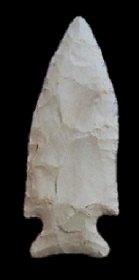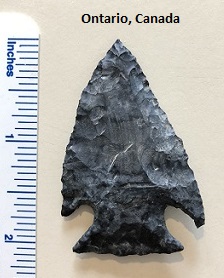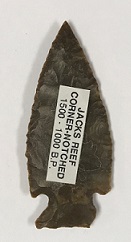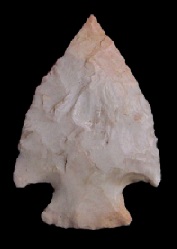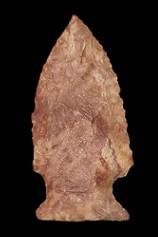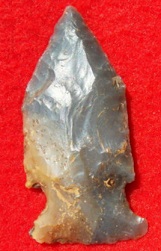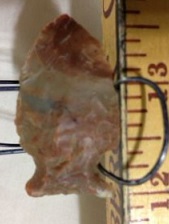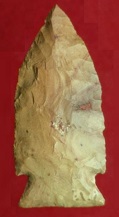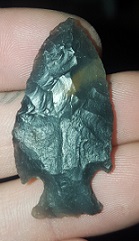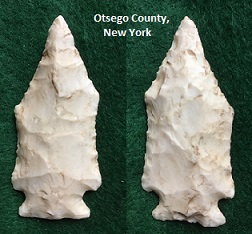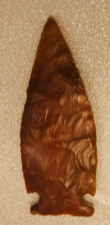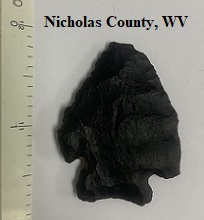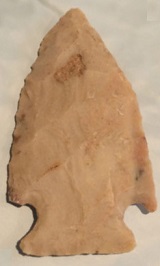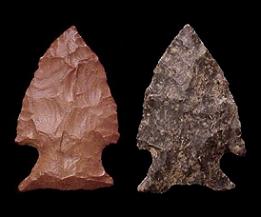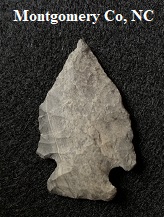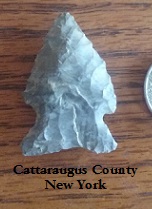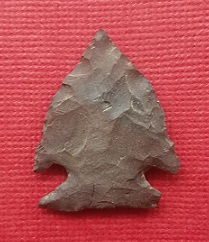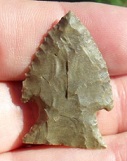Outline is Representative of Size and Shape:

Name Details:
Identified By: William A. Richie
Named For: Type Site
Date Identified: 1961
Type Site: Jacks Reef Site, Onondaga County, New York
Identified By: William A. Richie
Named For: Type Site
Date Identified: 1961
Type Site: Jacks Reef Site, Onondaga County, New York
Point Validity:
Valid type
Richie was a prominent anthropologist who served as the state archaeologist for the State of New York, the State Museum and Science Service. He excavated over 100 sites in the state of New York and published over 150 professional publications. He named this type in a professional publication and this type has many professional references. This is considered a valid type.
Richie was a prominent anthropologist who served as the state archaeologist for the State of New York, the State Museum and Science Service. He excavated over 100 sites in the state of New York and published over 150 professional publications. He named this type in a professional publication and this type has many professional references. This is considered a valid type.
Jacks Reek Corner Notch
AKA: Broad Corner NotchCluster: Jacks Reef Cluster
Description of Physical Characteristics and Flaking Pattern:
This is a broad thin medium (1.25 to 2 inches) corner notch point that is triangular to pentagonal in shape. The cross section is primarily flattened, but rarely be elliptical. The blade may range from excurvate to an angular tip with the sides of the blade being parallel. The shoulders are thin sharp barbs that may range from small to large. The stem is expanding. The base is commonly straight, to may be slightly concaved. Basal thinning and grinding / smoothing is usually present. This point has a random flaking pattern.
Size Measurements:
Total Length - 25 to 65 mm (42 mm average), Stem Length - 6 to 12 mm (8 mm average), Blade Width - 15 to 30 mm (19 mm average), Neck Width - 10 to 20 mm, Stem Width at Base - 13 to 23 mm (16 mm average), Thickness - 3 to 5 mm
Total Length - 25 to 65 mm (42 mm average), Stem Length - 6 to 12 mm (8 mm average), Blade Width - 15 to 30 mm (19 mm average), Neck Width - 10 to 20 mm, Stem Width at Base - 13 to 23 mm (16 mm average), Thickness - 3 to 5 mm
Commonly Utilized Material:
Cherts and jasper
Cherts and jasper
Additional Comments:
Ritchie originally referred to these points as Broad Corner Notch points before re-naming them. (Cambron, 1975).
Coe (1995) suggests that these points showed up earlier in the northeast spread east and west from there. These points would be younger than the points in the northeast.
In Ohio and the Ohio River Valley these points are associated with the Intrusive Mound Culture and use the name Intrusive Mound Corner Notch.
Ritchie originally referred to these points as Broad Corner Notch points before re-naming them. (Cambron, 1975).
Coe (1995) suggests that these points showed up earlier in the northeast spread east and west from there. These points would be younger than the points in the northeast.
In Ohio and the Ohio River Valley these points are associated with the Intrusive Mound Culture and use the name Intrusive Mound Corner Notch.
Distribution: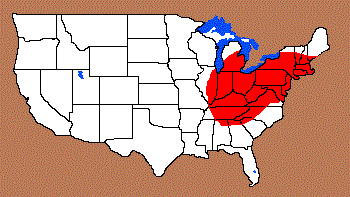
Distribution Comments:
This point is most commonly found in the Seneca River region of central New York and into Great Lakes area and into New England. It is found with less frequency into eastern Illinois and northern Alabama
This point is most commonly found in the Seneca River region of central New York and into Great Lakes area and into New England. It is found with less frequency into eastern Illinois and northern Alabama
Age / Periods:
Date: 1,500 - 1,000 B.P.
Cultural Period: Woodland
Glacial Period: Roman to Medieval Warm
Culture: Point Peninsula Culture
Date: 1,500 - 1,000 B.P.
Cultural Period: Woodland
Glacial Period: Roman to Medieval Warm
Culture: Point Peninsula Culture
Age Details:
This point is considered part of the Kipp Island / Hunter Home Phases.
This point is considered part of the Kipp Island / Hunter Home Phases.
Similar Points:
Amos, Intrusive Mound Corner Notch, Kirk Corner Notch, Palmer, Stilwell, Thebes, Vosberg
Amos, Intrusive Mound Corner Notch, Kirk Corner Notch, Palmer, Stilwell, Thebes, Vosberg
Other points in this cluster / Related / Associated Points:
Intrusive Mound, Jacks Reef Pentagonal, Knight Island, Raccoon Creek
Intrusive Mound, Jacks Reef Pentagonal, Knight Island, Raccoon Creek

